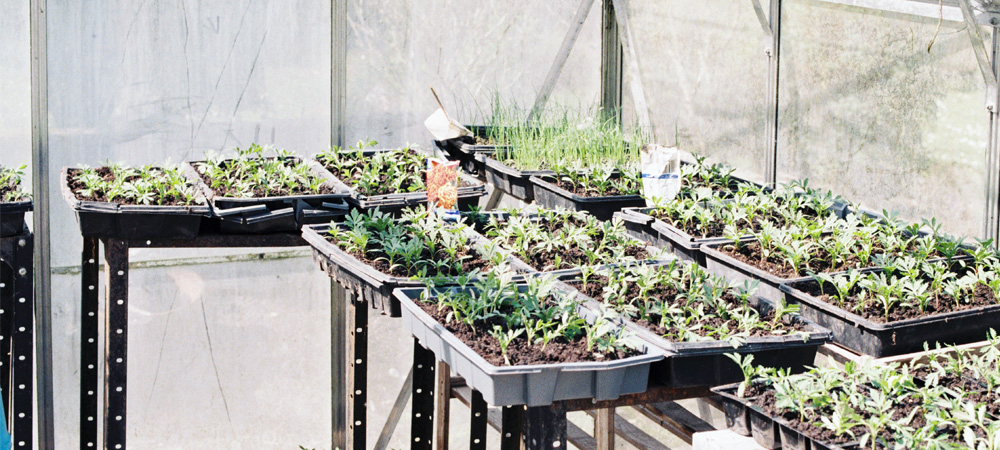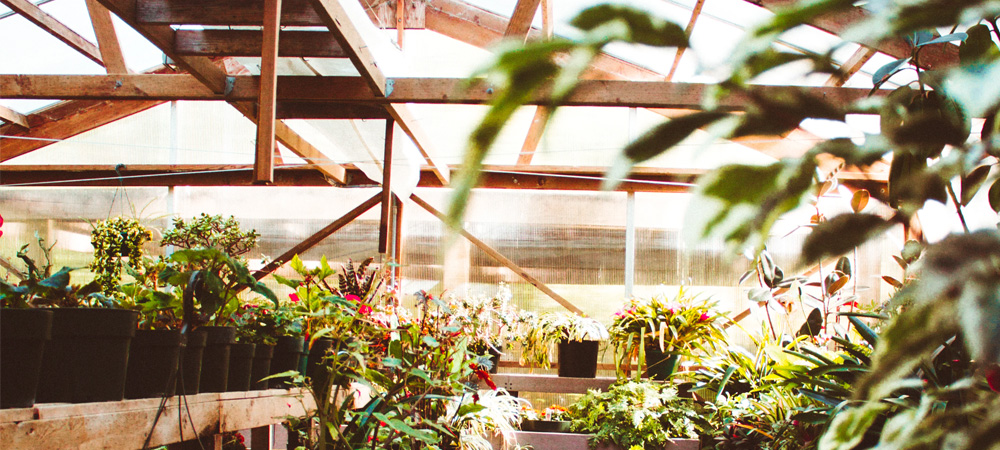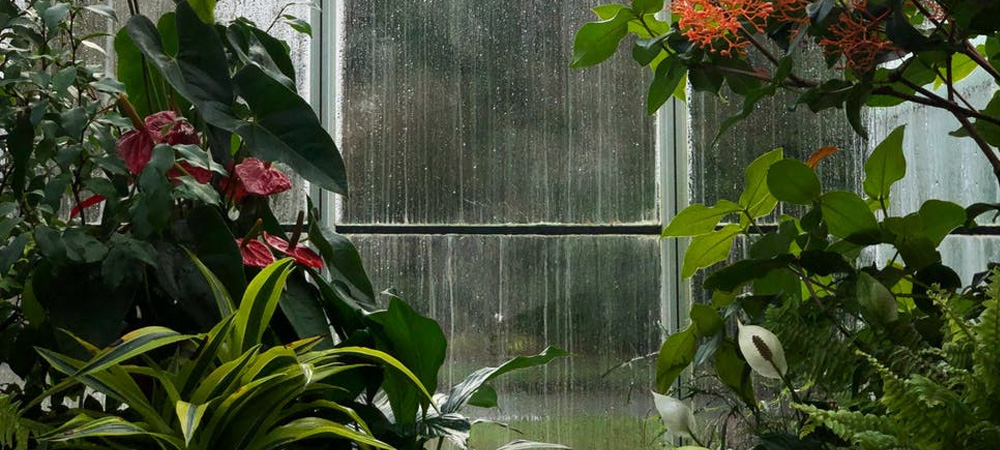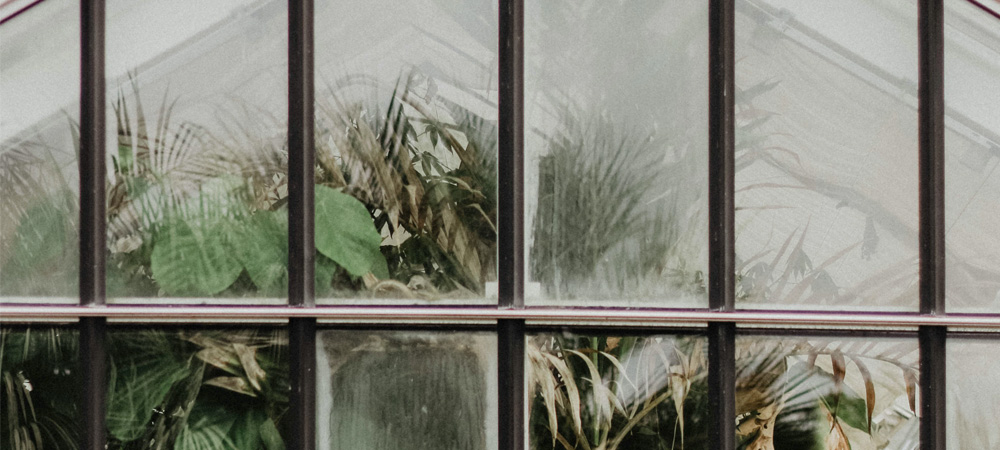Greenhouse Buyer's Guide

Best Tips for Choosing a New Greenhouse
If you have a great deal of land and money, and therefore no limitations on your choice of greenhouses, then you can simply choose the size and style of greenhouse that best suits the amount you want to grow, and how you want the building to look.
For most people though, the choice of a greenhouse comes with limitations and some compromise. You may want a huge greenhouse with a lot of space for massive crops, but in a smallish garden, there is not enough room for it. You may also want something fancy, or high-tech, but not have the budget to get the one you want.
For most people, then, it comes down to a process of determining just how much sunny space you have in your garden to put the greenhouse, and then which greenhouse of that size you can afford to buy.
What practical tips can I follow?
Survey your garden
Determining the options and limitations of your particular situation is key when planning any gardening, and greenhouses are no exception to this. When it comes to choosing the best greenhouse, including where to put it and how big it should be, it is best to start with seven key considerations:
Where to position in?
First determine, if you don’t already know them, the points of the compass in relation to your garden – in other words, figure out which way is east, south, west, and north. Most advice says that the ridgeline of your greenhouse roof should run east-west in order for the most sunlight to hit your glass panes, and therefore the plants within.
This is more important with longer, narrower greenhouses than it is with shorter ones, of course, and it is not a huge problem if your garden simply won’t allow this kind of configuration. Remember, this process involves compromise and adaptation to your particular situation.
One side of the greenhouse – preferably the long side – should face south or southwest, to ensure the most sunshine falls on it in any given day. You may find that this results in too much light (and therefore heat) in your greenhouse in the summer, and that green netting is required to ease the potential effects of this over-heating. This is okay though, as you will be thankful for that extra heat during the colder months, and it allows you to better control the conditions in your greenhouse. If you have too much sunlight exposure, you can always add shading, but if don’t have enough, there is really nothing you can do to increase it when needed.
Water and Electricity Supplies
Related to ease of use and care of the greenhouse itself, is the accessibility to services. You’ll need a good supply of water, both for care of the greenhouse itself, and for care of the plants living inside of it.
Electricity, too, will likely be a need. Lighting, heating, propagators, and even automatic watering (and other) gadgets all need electricity to function. If you are going to use any of these, you’ll want to be close to a power source.
Level Foundations
Choosing a site that is already pretty level will help to decrease the amount of work needed to prepare a suitable foundation for your new greenhouse. Of course, if you have a dream-spot, and it is in need of substantial levelling or other preparations, it might be worth putting in the additional work.
One popular way of creating a solid foundation is to lay flagstones on level ground. These should extend at least half a foot past the edges of your greenhouse walls when it is put in place on top of them.
Some people fix their greenhouses directly into the soil. This is quick and easy, but not necessarily the most reliable method in the long run. Settling and shifting are much more likely to occur. Bolting the frame or aluminium base to a hard (and heavy) surface is the best way to prevent settling and properly anchor the greenhouse to the ground. A heavy, galvanised base is best as it will hold up better against the elements.
Fit Your Routine
Maintenance and care should be a consideration when choosing a greenhouse, and along with that comes ease of use. Will you mind hiking the length of a long garden to check on your greenhouse on a wet, windy winter’s night? If so, place it close to your back door.
Larger panes of glass are more easily cleaned and cared for. Make sure they are toughened, as these hold up better and look better too.
AppearanceYou’ll invest a lot in a greenhouse, and then you’ll place it in the garden, amid your flowers and other beautiful items – so it should look good and fit in well with your general aesthetic.
Most modern greenhouses look quite good, and you’ll have a variety of styles to choose from.

Avoiding High Winds
Every greenhouse is vulnerable, to some degree, to heavy winds. Not only can they cool the interior, but they can also damage the structure of the greenhouse itself. Where possible, then, place the greenhouse near a hedge, fence or wall, to provide some shelter from prevailing winds.
It is also often worthwhile to make sure your home insurance includes storm damage done to your greenhouse – especially if you invest in a more expensive one.
Avoiding Tree Related Problems
This may seem strange just after mentioning that there should be some shelter from wind damage, but trees have branches that can fall, and even intrusive roots that can damage foundations, so it is best to leave some space between greenhouses and trees, wherever possible.
The Next Step: Measurements
There are two important steps to do after choosing the placement of your new greenhouse: Measuring the site, and comparing that to the dimensions of the potential greenhouses.
Until you know how much space you have to put it in, you won’t be able to choose a greenhouse. Be sure to leave some space around the outside of it for access when cleaning and doing maintenance – it also looks a lot better than seeing something squished into a too-small space. Ideally, a metre and a half, or more, should be clear and accessible all around your greenhouse.
Once you know this, the dimensions of the potential greenhouse itself come into play. Width is the most important thing to consider. Generally, greenhouses come in widths of two-foot increments (i.e. 4’, 6’, 8’ etc.). Choose the widest one you can, keeping clearance in mind, as this will give you the most room to move around and access your plants within it. Once you have determined that, you can choose the length based on your available area.
Greenhouse Types
There are three basic style groups to choose from:
Traditional Greenhouses
These ones look like a little house, and are the most popular choice in the UK, largely because interior space is good for access, and they are rectangular, which fits well into most garden layouts.
Lean-to Greenhouses
These are attached to an existing wall (garden or house or outbuilding) and take advantage of heat storage within the mass of the wall. It is important for most plants that the wall (and therefore the greenhouse) is south-facing to provide maximum sunlight – as there is only one side allowing light in.
Potting Sheds
A combination of the functionality of a greenhouse and shed combined, often larger than a normal greenhouse.
Cold Frames
For a smaller sized greenhouse or a balcony appropriate option, a cold-frame can give you very similar functionality on a smaller scale.
Greenhouse Materials - Wooden vs Aluminium
There will be some who prefer one material over the other, but as a general summary, Wooden greenhouses are more traditional, and aluminium greenhouses are more modern.
Choosing The Right Size
The most common complaint about greenhouses is that they are too small. For this reason, you should probably buy the largest one that fits in your allotted area, and that you can afford. You can always leave some of it unused, or use it for storage of garden tools, compost, seeds etc., but if you find you need more room for growing, but have run out of space in your greenhouse, you will be out of luck with a smaller greenhouse choice. Only a couple of feet added to greenhouse dimensions actually result in a lot of additional usable space!
Shop our greenhouses buy size here:
Maximis Growing Space
Most starter greenhouses are 6 feet long and 8 feet wide. This is classed as a ‘small’ greenhouse, but is still sufficient for most beginners to grow what they need in a given season. Two to three tiers on each side, run the length of the greenhouse, is the usual layout, but often space is left on the lower portion of one side for grow bags and storage instead.
Mixing your shelving heights and styles can give you optimum adaptability to the different sizes of plants at different stages of their development.
Dealing With Drainage
Paving slabs is often better than a solid concrete pad in this respect for one obvious reason – there are gaps between the slabs. No greenhouse is 100% waterproof, and they don’t need to be. As long as you have adequate drainage – either through the gaps in flagstones or due to a properly-sloped concrete floor – any water infiltration will not be a problem.
Accuracy of Foundation Measurements
If you choose to use slabs for your foundation, you won’t want to be cutting them – and you won’t need to! Simply lay them out so that there is adequate space outside of the perimeter of your greenhouse. Ideally, let them overhang by at least a foot or so all around the greenhouse. In other words, if your greenhouse is 6’ by 8’, lay an 8’ by 10’ foundation, or bigger.
If you choose to use a poured concrete foundation, the rules still apply, but you’ll obviously be able to be more accurate. Remember, when pouring your foundation, that you won’t want it completely level. Ideally, have it slope gently from side to side, or from the front toward the back. This will ensure that water leakage – or spillage – has somewhere to go, and that it won’t pool up at the front door.
An important thing to note when planning for your greenhouse is that measurements are often approximations – especially if you are reading them in the imperial measurement style. Be sure to measure out the size of your greenhouse in metric, to centimetres or millimetres, to make sure you don’t cut it too close when planning your foundation overage.

Unlevel Slabs - Is it ok?
In short: yes. Serious sloping may be an issue when it comes to sure footing, and the same goes for lips or drops, but there is no structural reason why a slightly uneven, but solid, foundation won’t work. You may find that there are gaps under the bottom of it that will need to be filled in, but if that isn’t a problem for you, then you should be alright.
Help! My area isn't large enough.
In this situation, you really have three options.
The first is to extend the area of slabs by laying down more of them. This will be the best as far as appearance goes, especially if you can find a good match.
The second is to move half of the slabs outward so that all four corners of the greenhouse are on slabs, but part of the walls between them is not. This ensures that the corners are solid and secure.
The third it to anchor two of the corners on the slabs, and the other two directly into the soil, or onto a poured concrete foundation extension. This will be very secure, but there will be two different floor types, as with the first option.
Choosing a Base
You will probably have seen greenhouses set on a low brick wall-like foundation. Most greenhouses today, however, are sold with a metal base, so all you need is a solid foundation to fasten them down.
Concrete bases, so long as they are slightly sloped to allow proper drainage, are the most secure. Heavy slabs are similar, and have the added benefit of cracks between them that allow water to drain out. Anchoring directly into the soil can work too, but you’ll want to make sure the anchors are deep, and strong enough to prevent the greenhouse from shifting during heavy winds.
The larger your greenhouse is, the better the foundation you will want, so if you are going for a large one, protect your investment with a good concrete foundation.
If you’re not sure, there are greenhouse installation services available from some sellers, and some independent gardening and garden service businesses.
Do I need a base?
Most greenhouses do need the metal base. They are designed with the base as an important part of the structural integrity and strength of the building. This base replaces the older tradition of the brick base. These bases also provide several inches of additional height to your greenhouse, increasing the comfort of the person(s) working inside of them, and giving additional room for growing.
Pros of a Metal Base
The main purposes of a greenhouse base include stability and mooring to the ground, structural strengthening, and keeping out pests, water and other unwanted substances.
A good metal base of galvanised steel creates a neat finish with smooth outside edges. The corners are securely anchored onto a solid foundation, or extra-long anchor legs allow for secure attachment to the soil itself. All models have corner legs, and longer models include additional legs along the length of the greenhouse for additional strength and security.
Fixing the metal base to foundations is made easier by the inclusion of brackets, which reduce the amount of drilling necessary. Bases and brackets come with a ten-year guarantee for customer peace of mind, and full instructions for installation.
How to anchor a metal base?
Anchoring sets are made specifically for each of the different foundation options. If you are starting with a pavement slab or concrete foundation, there is a kit for that that includes the proper number and size of screws and plugs. Likewise, anchor legs are included for those choosing to use soil foundations.
All it takes is a hole drilled through the bottom flange of the metal base and straight through the foundation, and a screw driven into the hole. A 7mm hammer drill does the job quite nicely.
Powder-Coated Coloured Finish
Where once greenhouses were very plain (or even ugly) in appearance, current manufacturers realise that just because it is a functional tool for your garden, doesn’t mean it can’t also be a beautiful feature. Where once it might have been an eyesore, your new greenhouse can actually be a highlight of your garden.
Powder coating technologies allow for a variety of hard-wearing, functional colour-coatings on your greenhouse. Match your home, blend in with the foliage, or make a statement with a bright, vibrant colour – the choice is now up to you.
What is powder coating?
Most paint is applied wet, as a thick liquid that dries over time, leaving a reasonably-hard coating. The process known as ‘powder coating,’ however, is much harder and longer-lasting. It involves a five-stage pre-treatment chemical process during which components are thoroughly cleaned of all impurities, grease, soil and other contaminants. They are then coated in a dry powder, and an electric charge is run through it, causing the powder to bond with the aluminium. Once bonded, the coated components are baked, hardening the coating yet further and creating a durable, beautiful finish.
What colours can I choose from?
Most colours are available, though due to the limited colours of PVC components, some are rare. Contact the manufacturer for any questions regarding the colours available in the particular model and style you are looking for.
Horticultural Glass
Standard horticultural glass usually comes in 2’ by 2’ panes, and is the standard glass for most greenhouses. It is cheap to produce and therefore very common, but it has some disadvantages worth your consideration.
First of all, it is not tempered. This means that, if it breaks, it doesn’t shatter into tiny bits like modern residential window or automobile glass. Instead, it breaks into long, relatively-heavy, and potentially-hazardous shards of glass. The second disadvantage is less dramatic, but more common – it is difficult to clean. The panes are small, and so there is an increase in overlap and frame pieces. This means that there are ridges and gaps that collect unsightly soul, dust, and sometimes mildew or moss.
One solution to these disadvantages is to upgrade to a single-sheet, hardened safety glass. Not only will you avoid the potential danger of untampered glass, and the additional cleaning needs, you’ll also improve the appearance of your greenhouse by instead having an uninterrupted, single sheet of glass over a larger area.

Toughened Safety Glass
This safer, more user-friendly glass has traditionally been much more expensive than standard horticultural glass, but in recent years the cost of tempering glass has come down dramatically. Some manufacturers today sell over half of their greenhouses equipped with safety glass.
Some of the benefits of the glass include:
- Larger panes for more beautiful final effects
- Fewer interruptions in the glass, and therefore easier cleaning
- Much stronger than standard horticultural glass
- Much safer – either remains whole and unblemished, or shatters into tiny, less-dangerous bits
More Information on Toughened Glass
Toughened (also known as tempered) glass is made from normal glass. Since it cannot be cut once toughened, normal glass is cut to the desired size and then toughened afterwards. A specialised furnace rapidly heats the outer surface of the glass, creating a differential in tension that produces the desired increase in strength, and the shatter characteristics.
How strong is toughened glass?
To avoid being scientific about it, but rather to put it in everyday terms, you could hit it with a football and it wouldn’t break – but a cricket ball is more likely to shatter it. As long as the edges are secure, the pane as a whole is quite resilient. If exposed edges are hit against a hard surface, however, like concrete or stone, the pane may shatter. It is therefore very important to take care when moving or installing toughened glass. In most cases, this is best left to professionals, not only because they are used to dealing with it, but also because they will usually have insurance or policies around breakage that mean you won’t have to pay to replace any pieces broken during installation.
Is polycarbonate glazing a good choice?
This is basically a plastic option to glass. It has some advantages, in that it doesn’t break easily, is relatively safe when it does, and has slightly better insulation values.
There are some losses too, however.
Its flexible, lightweight qualities make it more susceptible to wind damage.
- It may not break, but it is more likely to pop out of place, opening your greenhouse contents to the wind and weather at the worst possible time.
- This lack of rigidity also affects the rigidity of the greenhouse as a whole. They are designed to account for the added structural strength of glass and, if plastic is used instead, some of this strength is lost.
- You won’t be able to see through the panes well, so the beauty of your greenhouse plants will be lost to outside viewing. This effect can also turn your greenhouse from a light-looking frame structure to a more solid, heavy-looking structure in your garden, which may ruin the aesthetic.
- The panes are made using twin walls, and algae can infiltrate over time, making it look permanently dirty and unsightly.
- Finally, it is sometimes even more expensive than toughened glass.
We therefore recommend toughened glass over polycarbonate options.
You can shop a full range of greenhouses on the Swgreenhouses.co.uk website, including all the popular brands such as Halls, Eden, Elite, Swallow, Juliana, Clearview, and Evika.
 Author:
Author: